Metadynamic Recrystallization of the As-cast 42CrMo Steel after Normalizing and Tempering during Hot Compression
QI Huiping* and LI Yongtang
School of Materials Science and Engineering,Taiyuan University of Science and Technology,Taiyuan 030024,China
1 Introduction
Ring rolling is an advanced technology to produce all kinds of ring parts.The existing hot ring rolling process is rolled on the forged billets.The ring rolling process includes baiting,heating,upsetting,punching,heating,hot ring rolling and machining.The whole process is long and complicated.The process has some disadvantages,such as multi-time heating,materials and energy wasting.In recent years,the melting and casting process are developed greatly.The quality of cast billet is improved as well.So the casting-forging compound forming process is becoming possible.Aiming at the above disadvantages of existing ring rolling technology,we proposed a new ring rolling technology to produce ring parts.The new process is rolled directly on the ring casting billet.The new process includes casting ring billet,heating,hot ring rolling and machining.The first forging,upsetting and punching process in the existing process are reduced.So the new technology has many merits,such as reducing heating times,saving materials and working hour and increasing productively.But in the new technology,the deformation and modification of materials must be finished in the ring rolling process.So mastering the hot deformation behaviors of the materials and controlling its microstructure evolution by changing the process parameters during ring rolling become the key problems.In this project,as-cast 42CrMo steel is chosen as the sample materials.
LIN,et al[1-8],researched the hot deformation behaviors of 42CrMo steel during hot compression that includes dynamic recrystallization,metadynamic recrystallization,static recrystallization and their grain size,and obtained the stress-strain curves of the materials,the kinetic and grain size modeling of dynamic,metadynamic and static recrystallization.The above researches are all about forged 42CrMo steel.The researches on hot deformation behaviors of as-cast structure are few.CAO,et al[9],researched high-temperature flow behavior and microstructural evolution of as-cast Ti-46Al-6 alloy.The results showed that there was dynamic recrystallization during the hot compression.Temperature and strain rate were the two main factors that influenced flow softening behavior and microstructure evolution during high temperature deformation.MAO,et al[10],researched hot deformation behaviors of as-cast austenitic stainless steel by using the thermal-mechanical simulation method.Conclusions were obtained that the dynamic recrystallization was difficult to occur in as-cast structure due to its coarse grain.In the previous research,we have researched the hot deformation behaviors of as-cast 42CrMo steel and obtained its stress-strain curves and the kinetic and grain growth model during the hot compression[11-12].It is generally known that the metadynamic recrystallization occurs rapidly because it doesn't need time to form nucleus.It's difficult to preserve the grains of the dynamic recrystallization.So it's important to research the metadynamic recrystallization in the hot deformation.
In this paper,the isothermal compression tests are used to investigate the metadynamic recrystallization of as-cast 42CrMo steel after normalizing and tempering during hot compression.
2 Experimental Method
Isothermal compression tests are adopted in the research.The samples are from the ring sand casting billet.The normalizing and tempering are used to improve the properties of the materials.The structure of the materials is mainly of ferrite and pearlite (Fig.1).The samples are with diameter of 8 mm and the length of 12 mm.The two-pass compression experiments are performed on the Gleeble-1500 thermal-mechanical simulator.

Fig.1.Initial microstructure of the materials
To get precise experimental data,the samples must be kept in uniaxial compression state during the deformation process.The tantalum was let between the pressure head and the end of the sample to lubricate in case that the sample appears elliptic.
Fig.2 illustrates the experiments project.Firstly,the samples were heated to deformation temperature at a heating speed of 20 ℃/s,keeping the temperature 5 min to eliminate temperature stress and structural stress in the materials and making the structure of sample more uniform.Then the temperature was decreased to the deformation temperature at the speed of 5 ℃/s.Compression tests were followed.The two-pass hot compression tests were investigated at different temperature (850 ℃,950 ℃,1 050 ℃,1 150 ℃),different strain rate (0.01 s-1,0.1 s-1,0.5 s-1,1 s-1),and different pass interval time (3 s,15 s,60 s).
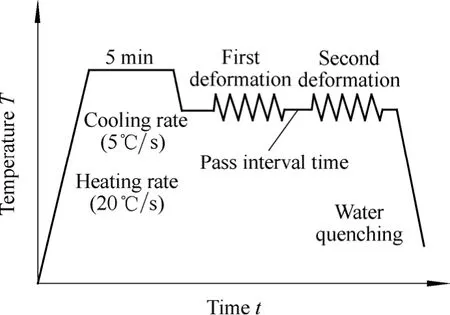
Fig.2.Experimental project
3 Experimental Results
The stress-strain curves of two-pass hot compression at deformation temperature 1 050 ℃ and strain rate 0.1 s-1are shown in Fig.3.As seen from Fig.3,the strain is up to the critical strain value,the dynamic crystallization occurs in the first compression.So the dynamic crystallization occurs in the pass interval.The stress decreases after the pass interval,and the materials are softened in the pass interval.
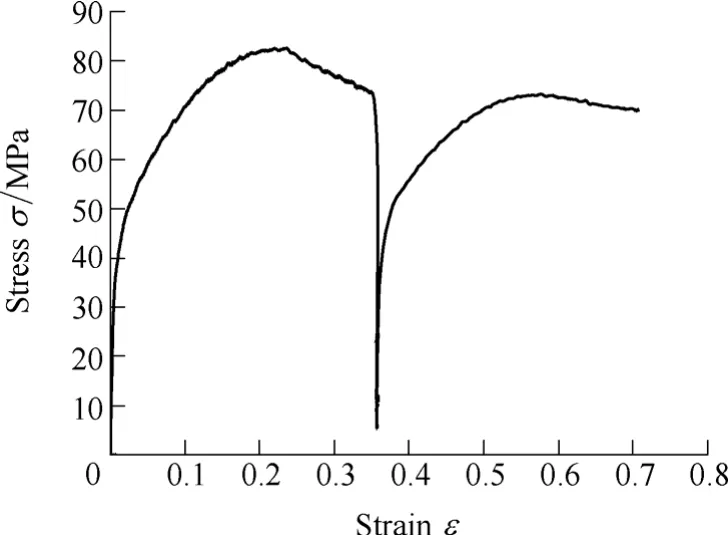
Fig.3.Stress-strain curve of two-pass compression at 1 050 ℃ and 0.1 s-1
The softening fraction of the metadynamic recrystallization may be expressed by many methods such as back extrapolation method[2],strain-recovery method[13],offset-stress method[3],and average stress method[14].In this paper,the offset-stress method is used to express the softening fraction,and the expression equation is

whereXmdrxis the softening fraction of the metadynamic recrystallization,σmis the true stress at the end of the first deformation,1σand2σare respectively the offset stress(0.2%) of the first deformation and the second deformation.
3.1 Effect of deformation temperature on the softening fraction
In Fig.4,abscissa is the deformation temperature and ordinate is the softening fraction.The softening fraction increases with the increase of the deformation temperature.When the deformation temperature is 1 050 ℃ or 1 150 ℃,the softening fraction is more than 95% at the stain rate of 0.1 s-1.But the softening fraction is less than 80% at 950 ℃.Because crystallization is a thermally-activated process,the rate of the forming nuclear will increase at high-deformation temperature.So more grain nucleus could be provided for the metadynamic recrystallization at high deformation temperature.Moreover,the metadynamic recrystallization is a grain-growth process.The rate of grain boundary migration is accelerated with the increase of deformation temperature,which is helpful for the growth of the grain.
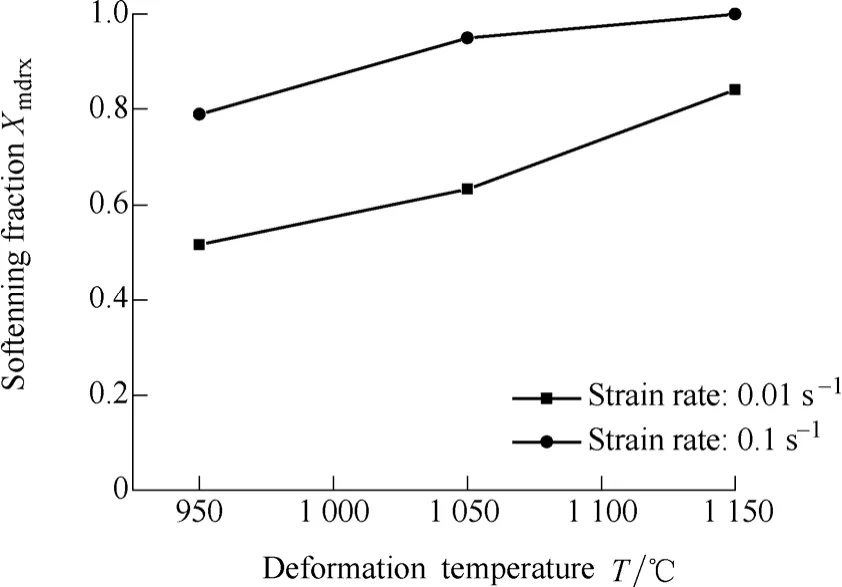
Fig.4.Softening fraction at different deformation temperature
3.2 Effect of strain rate on the softening fraction
It's obvious that the softening fraction increases with the increase of strain rate (Fig.5).With the increase of the strain rate,the deformation of the materials becomes more inhomogeneous and the dynamic recovery has not enough time to occur,which make the dislocation density and the drive force of the recrystallization increase so that the recrystallization is easier to occur.Moreover,the dynamic recrystallization fraction decreases at high strain rate,but the rate of nucleation increases[15].So at high strain rate,more grain nucleus can be supplied for the metadynamic recrystallization so as to promote the occurrence of the metadynamic recrystallization.
3.3 Effect of pass interval time on the softening fraction
The first deformations are completely identical at different pass interval time.So the true stress-strain curves display intuitively the effect rule of the pass interval time on the softening fraction.Fig.6 shows the stress-strain curves at different pass interval time when the deformation temperature is 950 ℃ and the strain rate is 0.01 s-1.The softening fraction is only 9.8% when the interval pass time is 3 s.When the interval pass time is 15 s,the softening fraction is 26.75%.When the interval pass time extends to 60 s,the softening fraction is up to 51.67%.The softening fraction increases with the increase of the pass interval time.Although the metadynamic recrystallization doesn't need nucleating,the growth of the grain needs necessary time to finish.So the softening fraction will increase with the prolongation of the interval pass time before it comes to its maximum value.It can also be got that the working hard will increase with the increase of the interval pass time.The peak stress during the second compression is the biggest when the pass interval time is 60 s.
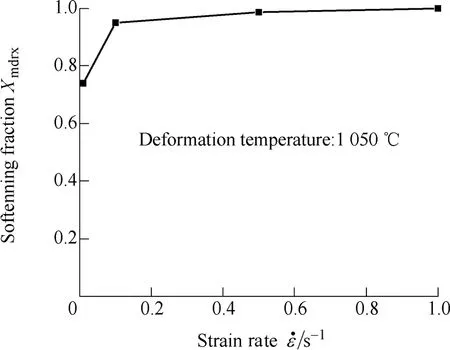
Fig.5.Softening fraction at different strain rate
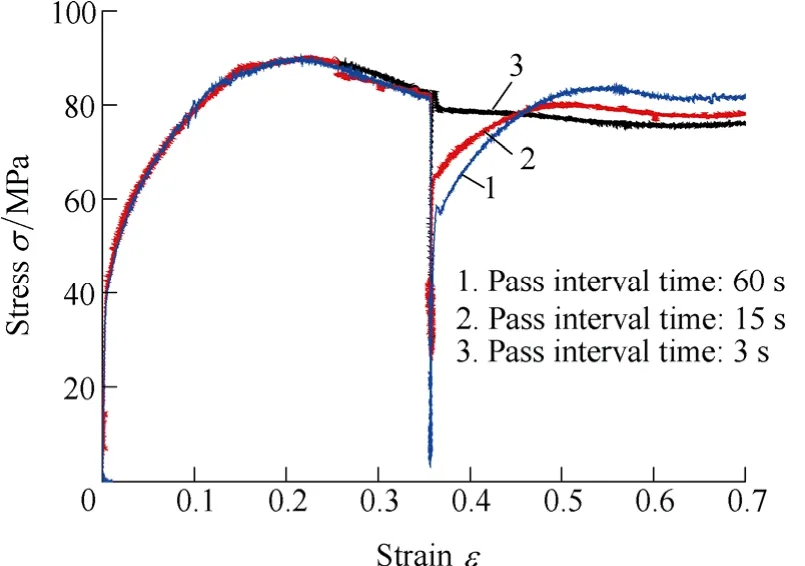
Fig.6.Stress-strain curves at different pass interval time
3.4 Effect of the initial grain size on the softening fraction
The initial grain size can be obtained by setting different heat preservation time (300 s,200 s,100 s).Fig.7 gives the stress-strain curves with different initial grain size when deformation temperature is 1 050 ℃ and the strain rate is 0.01 s-1.

Fig.7.Stress-strain curves at different heat preservation time
The softening fraction decreases slightly with the increase of the heat preservation time.The softening fraction is almost close to 51%.The influence of the initial grain size on the softening fraction is very small and negligible.
4 Kinetic Model of the Metadynamic Recrystallization
4.1 Modeling the kinetic of the metadynamic recrystallization
The metadynamic recrystallization fraction of the as-cast steel during the hot compression increases with the increase of the deformation temperature,the strain rate and the pass interval time.The change rule is in accordance with the Avrami equation.So the kinetic equation of the metadynamic recrystallization can be expressed as the Avrami equation[16-18]:
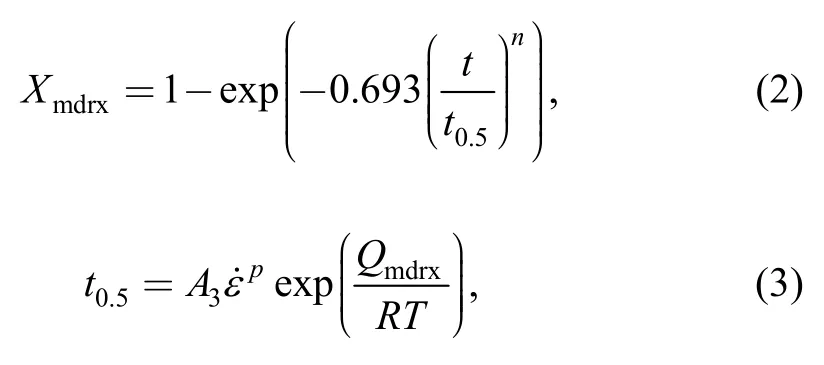
wheretis the pass interval time (s),t0.5is the time needed for 50% of the metadynamic recrystallization,Aandpare coefficients related to materials,Qmdrxis the activation energy of the metadynamic recrystallization,ε˙is strain rate andRis the gas constant.
Eq.(4) can be obtained by taking logarithm to both sides of Eq.(2) twice:

At the right side of Eq.(4),the first and the third items are constant for the certain materials and deformation parameters.So the value ofncan be obtained from the relationship between ln(l n(1/(1-Xmdrx)))and lnt.As shown in Fig.8,the value ofncan be obtained as 0.54 by taking the average value of them.
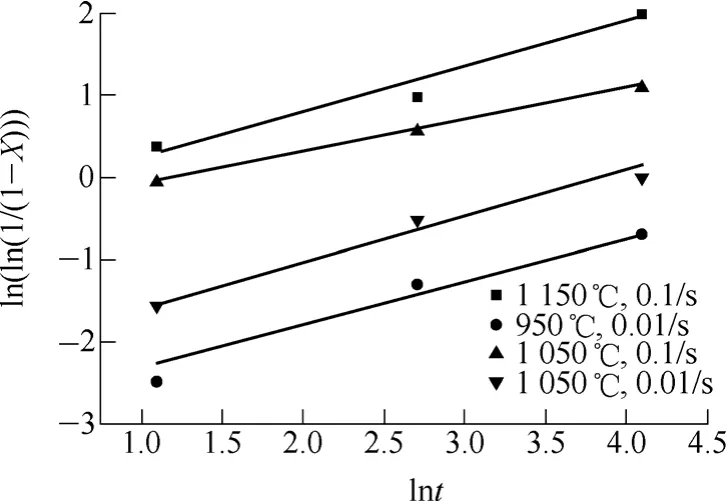
Fig.8.Relationship between ln(ln(1/(1-Xmdrx))) and lnt
Eq.(5) can be obtained by taking logarithm to both sides of Eq.(3):

Substituting the experimental data into Eq.(2),the value oft0.5at different pass interval time can be solved.The value ofpcan be solved according to the relation between lnt0.5and lnε˙ (as shown in Fig.9).From the figure,it is easily to evaluate the value ofpas0.879 8.
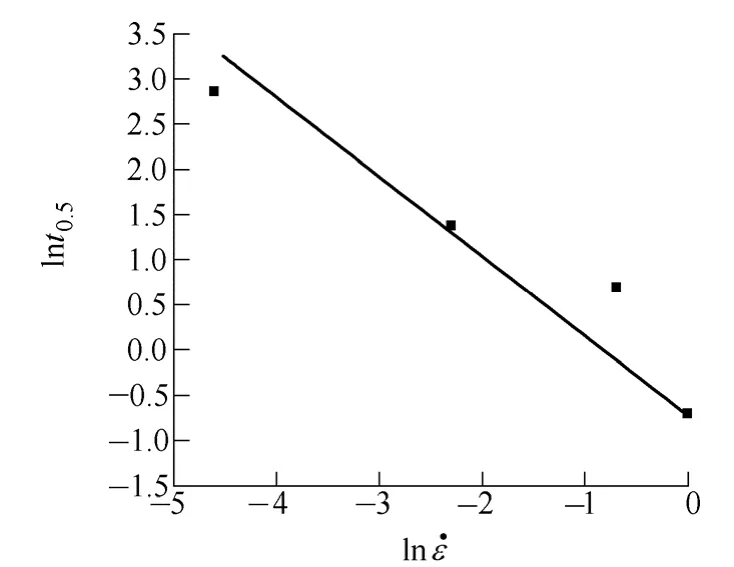
Fig.9.Relationship between lnt0.5and lnε˙
In the same way,the value of theQmdrxcan be solved according to the relation between lnt0.5and 1000/T(as shown in Fig.10).From Fig.10,the value of theQmdrxcan be obtained as 194.994 kJ/mol.The value ofAcan be obtained as 6.952×10-9by instituting the value of the coefficients related to materialsQmdrxandpinto Eq.(5).
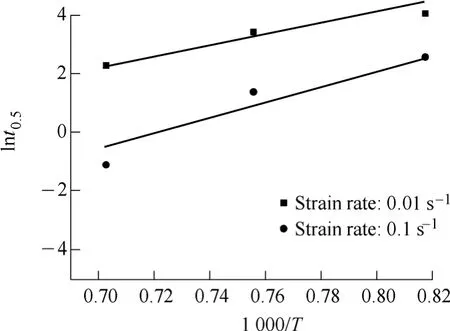
Fig.10.Relation between lnt0.5and 1 000/T
Instituting the above values into Eq.(1) and Eq.(2),the metadynamic recrystallization kinetic equation of as-cast 42CrMo steel can be represented as the following equations:
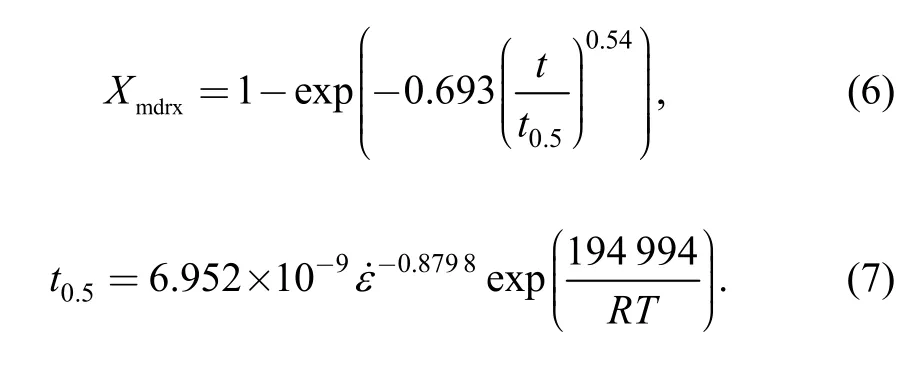
As seen from above equations,t0.5of the metadynamic recrystallization decreases with the increase of strain rate and deformation temperature.Namely high strain rate and deformation temperature can accelerate the occurrence of the metadynamic recrystallization.
4.2 Verifying the kinetic model
For verifying the correctness of the above kinetic model,the calculated results were compared with the experimental results.Partly comparison results are as shown in Table 1.WhereEis the error of the calculated results,and

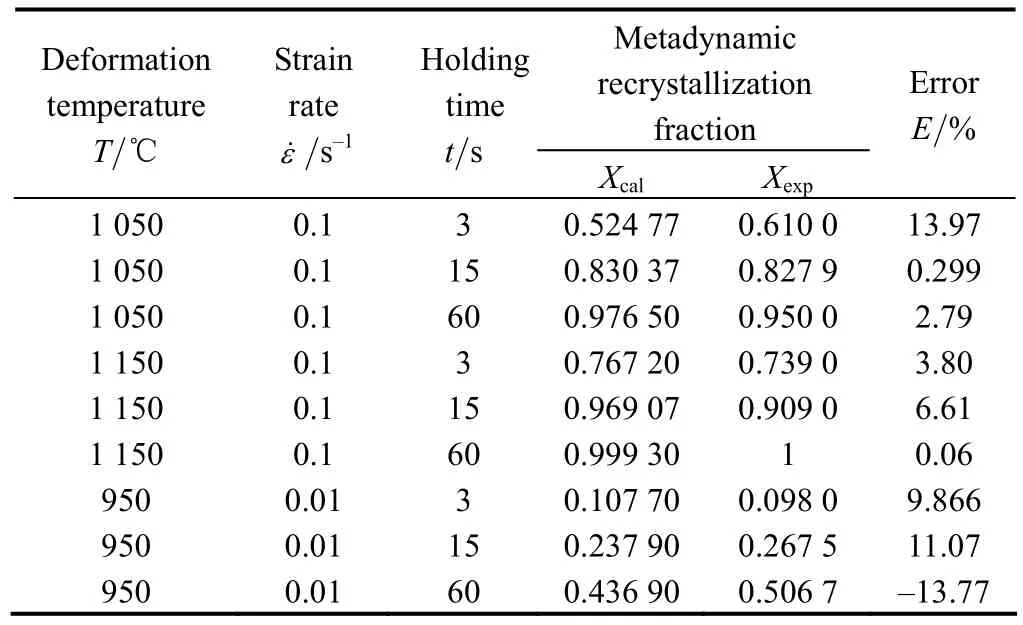
Table 1.Comparison between calculated results and experimental results
As known from Table 1,the value ofEis less than 14%.So the model is reliable.The model can supply the reliable materials date for the further research on the hot deformation behaviors of the as-cast 42CrMo steel and the numerical simulation of ring rolling process.
4.3 Comparison of the metadynamic recrystallization as-cast 42CrMo steel and forged 42CrMo steel
Eqs.(9) and (10) are used for the metadynamic recrystallization of the forged 42CrMo steel[1]:
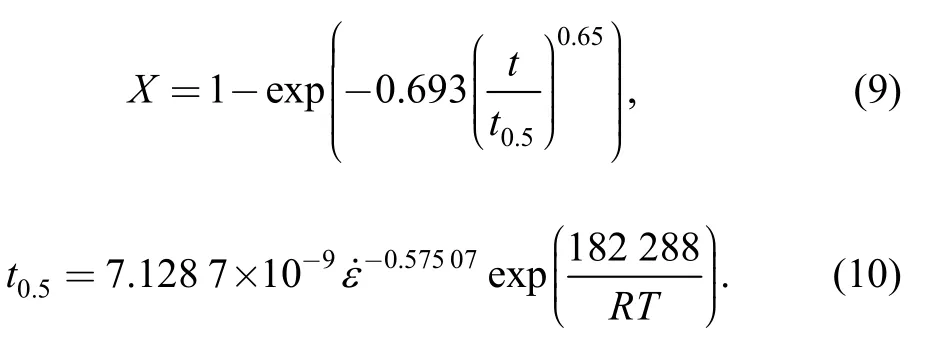
Comparing Eq.(7) with Eq.(10),the conclusion can be obtained thatt0.5of as-cast 42CrMo steel is obviously bigger than that of forged steel with the same deformation parameters.Namely that the time needed for 50%metadynamic recrystallization fraction of as-cast 42CrMo steel is longer than that of forged 42CrMo steel.Qmdrxin Eq.(7) is bigger than that in Eq.(10).This shows that the occurrences of recrystallization in as-cast structure need more activity energy.On the one hand,the coarse grain of the as-cast structure is not helpful for the occurrence of recrystallization.On the other hand,the occurrence of the metadynamic is directly related to the dynamic recrystallization.Only the dynamic recrystallization occurs in the first compression can the metadynamic recrystallization occur at pass interval.According to the previous research,the dynamic recrystallization fraction of as-cast 42CrMo steel is smaller than that of the forged 42CrMo steel.
5 Grain Size of the Metadynamic Recrystallization
For getting the influence rules of process parameters on grain size of the metadynamic recrystallization,the samples after compression were insolated some time so that the occurrence of metadynamic recrystallization could be enough.Water quench was used to reserve its high temperature structure.Then the sample was cut axially.The cutting planes of these samples were eroded by using picnic acid and polished.Their microstructures were observed with metalloscope.
5.1 Effect of the strain rate on the size of the recrystallized grains
Fig.11 shows the optical microstructures at different strain rate (0.01-0.5 s-1) and deformation temperature of 1 050 ℃.
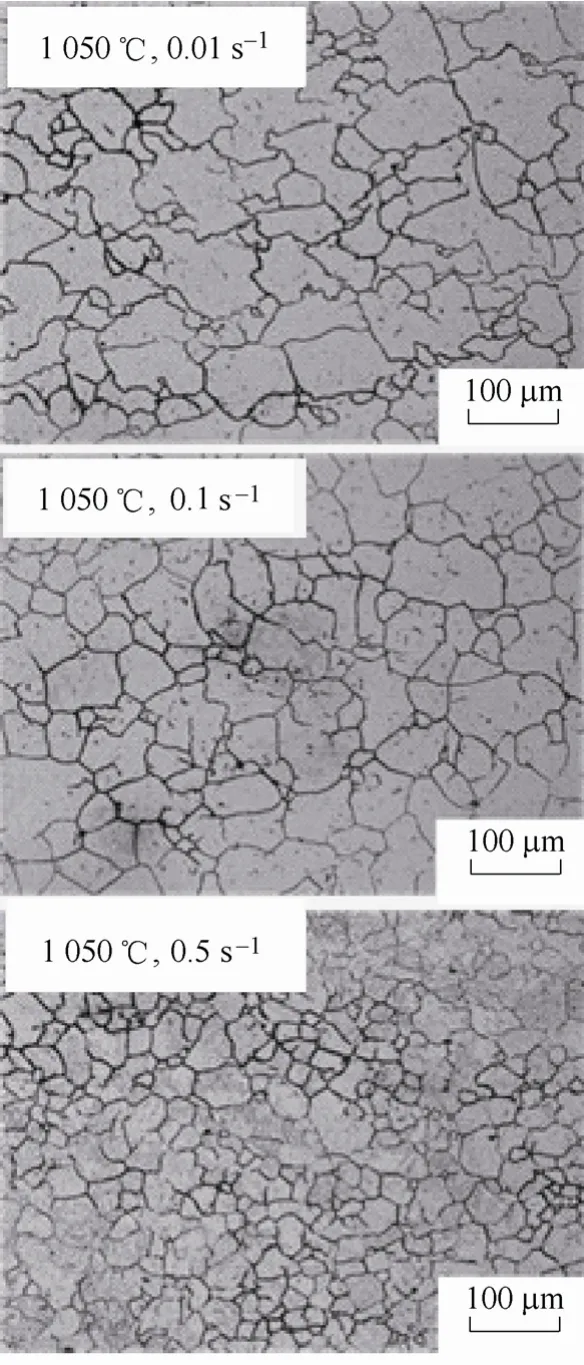
Fig.11.Optical microstructures of the materials at different strain rate and deformation temperature of 1 050 ℃
The change tendency of the recrystallized grain size is contrary to that of the strain rate.When the strain rate is 0.5 s-1,the grain will be very fine and homogeneous.However,the grain is coarse and inhomogeneous at the strain rate of 0.01 s-1.The former is 33 μm,the latter is 54 μm.So the high strain rate is helpful for refining grain and homogenizing the microstructure.
5.2 Effect of the deformation temperature on the size of recrystallized grains.
Fig.12 is the optical microstructures after hot compression at different temperature (950-1 150 ℃) and strain rate of 0.01 s-1.Different from the strain rate,the change tendency of the deformation temperature is accordance with that of the grain size.The grain size of the metadynamic recrystallization increases obviously with the increase of the deformation temperature.The metadynamic recrystallization is a grain-growth process.The grain growth is realized by grain boundary migration.The rate of grain boundary presents exponential increase with the deformation temperature.
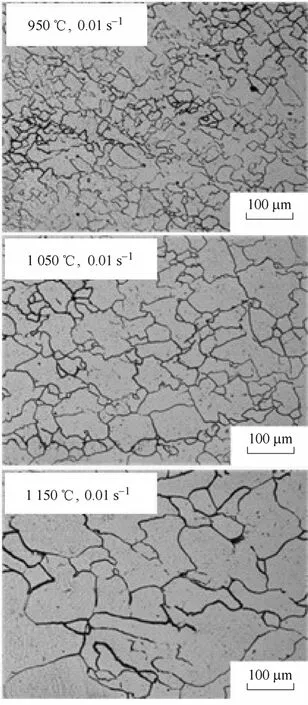
Fig.12.Optical microstructures of the materials at different deformation temperature and strain rate of 0.01 s-1
As shown in Fig.12,the average value of recrystallized grain size is 63.11 μm at 1 150 ℃.When the deformation temperature is 950 ℃,the average grain size is only 35.61 μm.The low deformation temperature is helpful for refining grain,but the low deformation temperature will increase the resistance of the material and the deformation force,which decreases the material's workability,especially for as-cast structure.
6 Conclusions
(1) The deformation temperature and the strain rate are two important influencing factors of the metadynamic recrystallization.The influences of the initial grain size on the softening fraction are very small and negligible.
(2) The softening fraction of the metadynamic recrystallization increases with the increase of the deformation temperature and the strain rate.The softening fraction will increase with the prolongation of the interval pass time before it comes to its maximum value.
(3) The metadynamic recrystallization kinetic model of as-cast 42CrMo steel during hot compression was built.The softening fraction of metadynamic recrystallization was expressed as the function of the deformation temperature,strain rate and delay time.It can be concluded from the kinetic model that high strain rate and deformation temperature could accelerate the occurrence of the metadynamic recrystallization.
(4) Compared to the forged 42CrMo steel,the time for 50% metadynamic recrystallization is longer.The occurrence of the metadynamic recrystallization in as-cast 42CrMo steel is more difficult than in forged 42CrMo steel.
(5) The grain size of the metadynamic recrystallization can be refined by increasing the strain rate and decreasing the deformation temperature.
The above research results will provide theoretical support for the further research on the hot deformation behaviors of as-cast 42CrMo steel and the new casting-rolling compound process.
[1]LIN Yongcheng,CHEN Mingsong.Study of microstructural evolutions during metadynamic recrystallization in a low-alloy steel[J].Materials Science and Engineering:A,2009,501(1-2):229-234.
[2]LIN Yongcheng,LI Leiting,XIA Yuchi.A new method to predict the metadynamic recrystallization behavior in 2124 aluminum alloy[J].Computional Materials Science,2011,50(7):2 038-2 043.
[3]LIN Yongcheng,CHEN Mingsong,ZHONG Jue.Research on metadynamic recrystallization behavior of 42CrMo steel[J].Transaction of Materials and Heat Treatment,2009,30(2):71-75.(in Chinese)
[4]LIN Yongcheng,CHEN Mingsong,ZHONG Jue.Flow stress behaviors of 42CrMo steel during hot compression[J].Journal of Central South University,2008,39(3):549-553.(in Chinese)
[5]LIN Yongcheng,CHEN Mingsong,ZHONG Jue.Effects of deformation temperatures on plastic formation and microstructure evolution of 42CrMo steel[J].Transactions of Materials and Heat Treatment,2009,30(1):70-74.(in Chinese)
[6]LIN Yongcheng,CHEN Mingsong,ZHONG Jue.Effects of deformation degree on plastic formation and microstructure evolution of 42CrMo steel[J].Journal of Central South University,2008,39(5):1 005-1 010.(in Chinese)
[7]LIN Yongcheng,CHEN Mingsong,ZHONG Jue.Static recrystallization behaviors of deformed 42CrMo steel[J].Journal of Central South University,2009,40(2):411-416.(in Chinese)
[8]LIN Yongcheng,CHEN Mingsong,ZHANG Jun.Modeling of flow stress of 42CrMo steel under hot compression[J].Materials Science and Engineering A,2009,499(1-2):88-92.
[9]SHI Puying,LI Zhenxi,CAO Chunxiao.High temperature flow behavior and microstructural evolution of as-cast Ti-46Al-6(Cr,Nb,Si,B) alloy[J].Rare Metal Materials and Engineering,2011,40(9):44-49.
[10]MAO Pingli,YANG Ke,SU Guoyue.Hot deformation behavior of as-cast austenitic stainless steel[J].Acta Metallurgica Sinica,2001,37(1):39-41.(in Chinese)
[11]FU Jia,LI Yongtang.Research on dynamic softening of as-cast 42CrMo steel during hot compression[C]//Proceeding of 7th North China Plastic Forming Annual Meeting,Chongqing,China,August 15-18,2010:58-63.(in Chinese)
[12]QI Huiping,LI Yongtang,FU Jia.Flow stress behavior of the normalized and tempered as-cast 42CoMo steel during hot deformation[J].Advanced Materials Research,2011,314-316:2 560-2 564.
[13]RAO K P,PRASAD Y K D V,HAWBOLT E B.Study of fractional softening in multi-stage hot deformation[J].J.Mater.Process.Technol.,1998,77(1-3):166-174.
[14]FERNANDEZ A I,LOPEZ B,RODRIGUEZ-IBABE J M.Relationship between the austenite recrystallized fraction and the softening measured from the interrupted torsion test technique[J].Scripta Materialia,1999,40(5):543-549.
[15]OUYANG Delai,LU Shiqiang,CUI Xia.Dynamic recrystallizationof titanium alloy TA15 during β hot process at different strain rates[J].Rare Metal Materials and Engineering,2010,40(2):140-145.
[16]MEDEIROSA S C,PRASADA Y V R K,FRAZIERA W G,et al.Microstructural modeling of metadynamic recrystallization in hot working of IN 718 superalloy[J].Materials Science and Engineering:A,2000,293(1-2):198-207.
[17]LI Lixin,HONG Jie,DENG Ning,et al.Static and metadynamic recrystallization kinetic models for boron microalloyed steel[J].J.of Wuhan Uni.of Sci.&Tech.(Natural Science Edition),2004,27(4):334-338.(in Chinese)
[18]CHO S H,KANG K B,JONAS J J.Effect of manganese on recrystallization Kinetics of niobium microalloyed steel[J].Materials Science and Technology,2002,18(3):389-395.
Biographical notes
QI Huiping,born in 1974,is currently a PhD candidate atSchool of Materials Science and Engineering,Taiyuan University of Science and Technology,China.She is also an associate professor atTaiyuan University of Science and Technology,China.Her research interests include advanced manufacturing technology for material processing,plastic successive and precision forming.
Tel:+86-351-6 963339;E-mail:qhp182257@yahoo.com.cn
LI Yongtang,born in 1957,is currently a professor and a PhD candidate supervisor atTaiyuan University of Science and Technology,China.He received his PhD degree fromTsinghua Universtiy,China,in 1994.His research interests include advanced technology for material manufacture and process,hydraulic system modeling and simulink.
Tel:+86-351-6 998029;E-mail:liyongtang@tyust.edu.cn
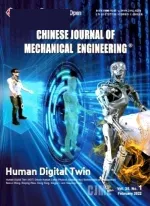 Chinese Journal of Mechanical Engineering2012年5期
Chinese Journal of Mechanical Engineering2012年5期
- Chinese Journal of Mechanical Engineering的其它文章
- Flow Characteristics of Expansion Energy Used Pneumatic Booster
